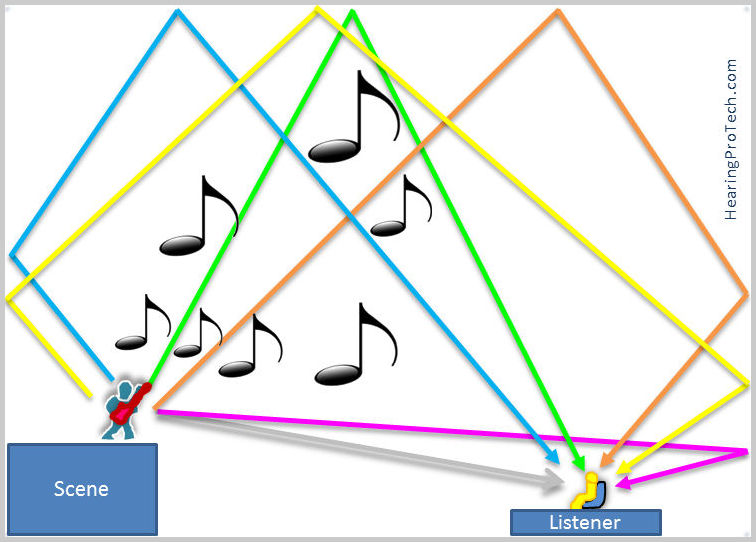Sound is different in a church, a movie theater, concert, in an empty room and in a furnished room...this is due to reverberation. It allows us to aurally identify the type of space in which we find ourselves. It gives momentum to the sound. Without reverberation, sound would be dry and flat.
Several factors influence the reverberation
When an object emits a sound, it does not propagate directly from the source to the listener, but propagates diffusely.
Another factor influencing the reverberation of a room is the material of the room's walls. The denser and smoother the surface, the lesser it absorbs and the reverberation time is longer.
Carpets, fabrics, etc. absorb sound.
So do people (the greater the number of spectators, the more obstacles there are that absorb sound rather well; this is why balance is so hard to maintain at a concert).
Time lag between the perception by the right ear and the left ear
We obviously have two ears, one on either side of the head. They are about 15-20 cm apart. As sound travels at the speed of 334 m/s, there will be a time lag between the perception by the right ear and the left ear.
Besides this, sound does not pass through the head but bypasses it, increasing the distance to be traveled by the sound between the ears. This time lag is interpreted by the brain to locate the origin of the sound on a horizontal plane.
We are familiar with stereos with left/right transmission. Home theaters use this time lag. The objective is to try to reproduce the sound played in a movie theater, which creates the illusion of being immersed in the movie with sound in several dimensions played through speakers placed on either side of the viewer.
Dolby technology fully utilizes the time difference between the perception by the right ear and left ear.





